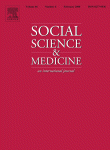
Widowhood and Mortality Among the Elderly: The Modifying Role of Neighborhood Concentration of Widowed Individuals
Abstract
The effect of death of a spouse on the mortality of the survivor (the "widowhood effect") is well-established. We investigated how the effect of widowhood on mortality depends on the neighborhood concentration of widowed individuals in the United States. We developed a large, nationally representative, and longitudinal dataset from Medicare claims and other data sources characterizing 200,000 elderly couples, with nine years of follow-up (1993-2002), and estimated multilevel grouped discrete-time hazard models. In neighborhoods with a low concentration of widowed individuals, widowhood increased the odds of death for men by 22% and for women by 17%, compared to 17% for men, and 15% for women in neighborhoods with a high concentration of widowed individuals. Our findings suggest that neighborhood structural contexts - that provide opportunities for interacting with others and favoring new social engagements - could be potential modifiers of the widowhood effects and as such requires more systematic consideration in future research of widowhood effects on well-being and mortality.
Citation:
S.V. Subramanian, F. Elwert, and N.A. Christakis, "Widowhood and Mortality Among the Elderly: The Modifying Role of Neighborhood Concentration of Widowed Individuals" Social Science and Medicine, 66(4): 873-884 (February 2008)